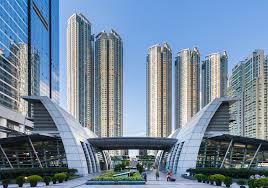Physical Address
304 North Cardinal St.
Dorchester Center, MA 02124
Physical Address
304 North Cardinal St.
Dorchester Center, MA 02124

Seamless Transit is the new transportation policy report from SPUR. Main author Ratna Amin proposes integrating the Bay Area’s balkanized transit systems to improve lackluster ridership. Given that the region has 23 separate transit providers–more than any other metropolitan area in the country–she may have a point. The report proposes standardizing service maps, fare structures, and payment systems; eliminating inter-system coverage gaps as well as redundant coverage; and reforming transit governance so that the different agencies actually make plans together instead of working at cross-purposes or not at all. The recommendations are sound and the report includes historical footnotes for context. These are helpful for understanding region’s complicated institutional arrangements. Seamless Transit is a fine piece of work and well worth the read for anyone interested in Bay Area transportation. But while organizational efficiency is important, it’s not the only thing to discuss. If we want to improve the region’s mass transit systems, we have to consider the physical environment in which those systems are embedded. To get transit right, the region needs to embrace density. Denser development around transit nodes would increase ridership substantially. When people live, work, and play in smaller geographic areas, more people travel between a fewer number of points. Mass transit, especially fixed rail transit, becomes more effective the denser development becomes. Hong Kong’s Metro Transit Railway (MTR) might be the quintessential example of urban density begetting mass transit success. The city is home to over 7 million inhabitants. It has a population density of over 18,000 residents per square mile. And of this population, 41% live within a half mile of an MTR station. The result? The MTR has a farebox recovery ratio of 186%–the highest in the world. Because of legal as well as political differences between Hong Kong and the Bay Area, […]

Integrating rail and property development is the cornerstone of the MTR’s success. In the U.S., coordination between transit authorities and developers tends to be mediocre at best. In Hong Kong, however, the MTR is both the transit authority as well as the property owner, and this makes all the difference. Coordination Problem Most attempts at transit-oriented development in the U.S. involve multi-party negotiations. The agency responsible for the transportation system haggles with different developers interested in undertaking projects along the line. Instead of implementing a unified plan, the transit agency has to negotiate specific agreements with each developer. And, because the priorities of the transit agency and the developers are never perfectly aligned, development agreements become subject to second-best compromises. Further, any disputes that arise once significant capital has been committed are costly to resolve. This arrangement makes leveraging land values difficult as well. Developers frequently get tax breaks as an incentive to undertake projects. Whether abatements on property tax or straight-forward rate reductions, tax incentives typically preclude the use of land values to help fund transit. And, even without special incentives, major property owners who stand to benefit from proximity to a transit system have every reason to resist tax increases of any kind if there’s a chance of free-riding. The MTR, on the other hand, uses the integrated rail-property development approach which combines the two roles of landlord and transit developer. The MTR owns the right-of-way as well as the surrounding properties. This removes the necessity of extended negotiations, having to settle for second best solutions, and the potential downside of disagreements partway through a project. By combining the functions of landlord and transit developer, the MTR is also able to internalize land values. The rail line drives up the value of the MTR’s properties and that value covers […]

Need to get 4 million people to the office every day? Hong Kong has you covered. The Mass Transit Railway (MTR) is a rail system in the city of Hong Kong, currently managed by the Mass Transit Railway Corporation Limited (MTRL). The system opened in 1979 and now operates over 135 miles of track as well as more than 152 stations in Hong Kong. The average trip costs somewhere between .50 cents and $3 USD, and the system makes back 186% of its operational costs on fares alone. Much of the system’s success can be attributed to urban density. Denser development means people live, work, and play in smaller geographic areas, meaning that more people are travelling between a fewer number of points. This is a huge plus for a fixed-route system like a railway. The MTR, however, hasn’t been a passive beneficiary of its environment. The MTR owns real estate around each station in the system and integrates rail and property planning so that the development of one supports the development of the other. Construction around each MTR station is incredibly dense, so it can put as many potential riders as close to a station as possible. Over 41% of the population in Hong Kong (2.78 million people) lives within a half-mile of a station. Additionally, the company’s real estate strategy emphasizes walkability; some residents of MTR owned properties can walk from their homes to a station entrance without ever even going outdoors. Clustering potential riders around each station–and making sure passengers have an easy time getting there–helps support high levels of ridership. While fares cover the costs of operations, it’s really property development that pays for maintenance and expansion. The rail line, in turn, increases the property values of parcels adjacent to each station. This augments the land […]